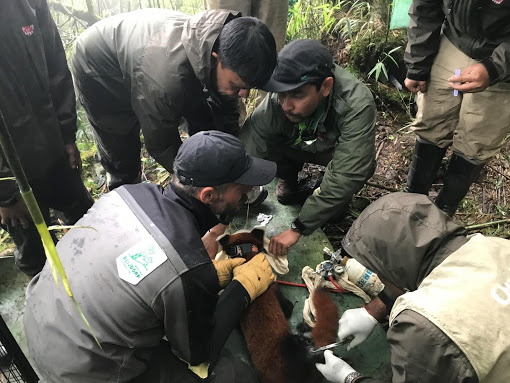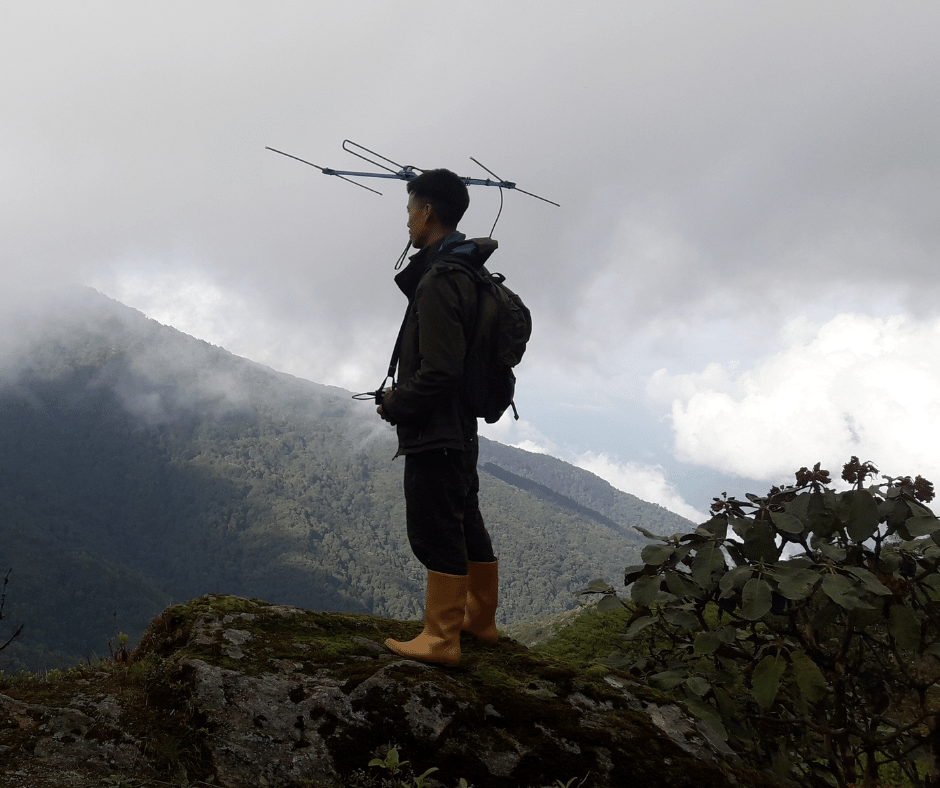In our summer 2020 newsletter, we talked about this project being carried out by our partner in Nepal: the fitting of GPS tracking collars on 10 wild red pandas in eastern Nepal. If you weren't a member at the time, here's a reminder of our previous article:
"The project to monitor red panda populations using GPS has finally seen the light of day after years of preparation. The monitoring is being led by the Department of Forestry and Soil Protection, in partnership with the Department of National Parks and Conservation, and the Red Panda Network (RPN), which initiated the project. The completion of the project has been facilitated by the implementation in 2019 of the five-year programme for the protection of the red panda that the RPN has drawn up with the Nepalese government* (CPPR 2019 newsletter). The study is being carried out in the forest corridor linking the protected areas of eastern Nepal and India: Panchthar-Ilam-Taplejung. The area lies close to Mount Kangchenjunga, the third highest mountain in the world! After three months' work in the field, a dozen pandas were fitted with GPS collars, including 6 females and 4 males. This first stage was carried out in the rural municipality of Sandakpur in the district of Ilam. The study is the first of its kind to be carried out by the Forest Department. All the participating organisations hope to lift the veil on the still little-known lifestyle of the little pandas.
To make the study as reliable as possible, the collars were previously tested on a pair of red pandas at Rotterdam zoo in the Netherlands. The device proved to be effective and uninterrupted. Training in the safe capture and handling of red pandas was also provided by a member of the park: Janno Weerman, the zoo's zoological manager and coordinator of the EEP (European Ex situ Programme) for red pandas on behalf of EAZA (European Association of Zoos and Aquaria). Finally, to finalise the monitoring and identify the individuals, the teams chose to assign names to each one, relating to the culture and landscape of the region concerned, as follows: Paaru, Dolma, Chintapu, Mechhachha, Bhumo, Senehang, Ngima, Brian, Ninamm et Praladdevi »

After a year of monitoring, here are some observations on the current lifestyle of the red pandas:
The study carried out in Nepal over a period of one year, tracking the movements of pandas using GPS collars, was supplemented by the installation of photographic traps. The collars transmitted data once every two hours. It should be noted that this is the the first time this type of monitoring has been used to study red pandas in Nepal.
The aim of the study was to investigate the movements and social behaviour of red pandas, and to understand how these highly habitat-adapted animals react to disturbance in human-dominated landscapes. The data shows that the pandas make great efforts to avoid human disturbance, even if this seems to mean that they modify their itinerary to do so. They seem particularly concerned by disturbances such as the presence of roads, livestock, over-cleared areas, or where the presence of free-roaming dogs is notable.

These initial findings confirm an earlier observation: one of the biggest problems facing the red panda population in Nepal today is the disappearance of the forests. Deforestation has led to habitat fragmentation, cutting the pandas off from each other and making it difficult for them to find food and shelter.
For a panda, leaving its forest to go to another increases the risk of an attack by a predator or poacher. That's why it's more important than ever to continue our efforts to restore the forests and do everything we can to maintain a healthy, sustainable environment.
